The Samsung Galaxy S21 Ultra 5G, freshly released, takes its place as the brand’s flagship, with all the biggest, fastest, smartest superlatives in tow. It’s got four rear cameras and a single front camera, a 6.8″ Dynamic AMOLED 2x display with a refresh rate of up to 120 Hz, and it even has an optional S pen for those fans of the Note series who want to use it the same way. It’s got up to 16 GB of RAM with 512 GB of internal storage. All those features come with a price tag to match.
No surprise, the S21 Ultra 5G loaded up on audio features, too, with stereo speakers by AKG and Dolby Atmos surround sound technology, with Dolby Digital and Dolby Digital Plus included. The brand boasts “ultra high quality audio playback” and supports a full range of playback formats. As a recording device, it touts zoom-in mic recording that focuses on the direction of interest using a combination of three built-in microphones while video recording. In “Pro Video” mode, users can use BT mic recording and BT mix recording to “capture sounds more clearly even from a distance with the remote mic (using Bluetooth).” The pro video mode allows the user to adjust volume, recording direction, and mic device selection manually.
Audio specifications include:
- Two AKG speakers, top side-firing and bottom side-firing
- Surround sound with Dolby Atmos technology (Dolby Digital, Dolby Digital Plus included)
- Zoom-in recording using three microphones
- Dual Audio (user can connect two Bluetooth devices for simultaneous playback)
About DXOMARK Audio tests: For scoring and analysis in our smartphone audio reviews, DXOMARK engineers perform a variety of objective tests and undertake more than 20 hours of perceptual evaluation under controlled lab conditions. This article highlights the most important results of our testing. Note that we evaluate both Playback and Recording using only the device’s built-in hardware and default apps. (For more details about our Playback protocol, click here; for more details about our Recording protocol, click here.)
Test summary
Scoring
Sub-scores and attributes included in the calculations of the global score.
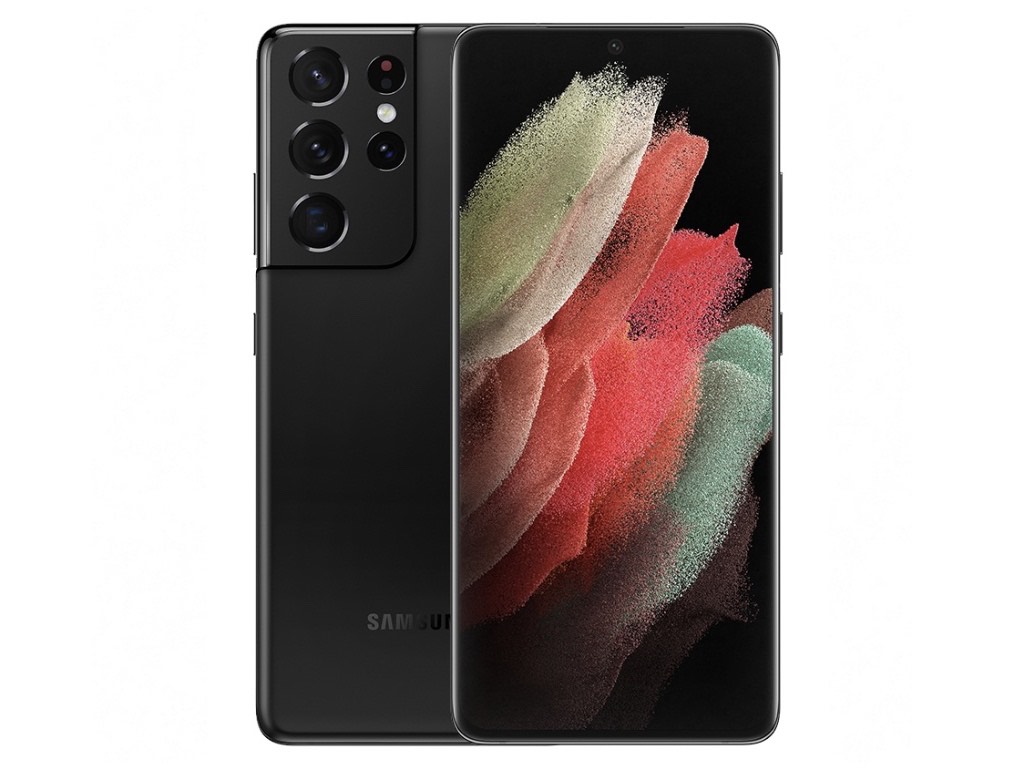
Samsung Galaxy S21 Ultra 5G (Exynos)


With a global score of 70 in our audio rankings, the Galaxy S21 Ultra 5G (Exynos) lands just outside our top 10 devices. The S21 turns in a solid overall performance in playback testing. Despite some flaws, balance and localizability are good. At low volume, the dynamics performance is decent. Maximum volume is loud enough. The device produces almost no artifacts, matching the top score of 93 in this attribute held by the Asus ROG Phone 5.
As for drawbacks, timbre performance is impacted by the midrange-focused tonal balance; low- and high-end extensions are limited. Wideness and distance performances are impacted by the lack of high-end extension (it’s those trebles that help the human ear place the location of sounds). The attack lacks sharpness and the lack of low-end extension hinders both bass precision and punch. The minimum volume step is not loud enough: some content is inaudible. When playing games, some distortions were perceived when playing at high volumes.

As a recording device, the Galaxy S21 Ultra 5G delivers good tonal balance at high sound pressure levels (SPL), as in our electronic music concert use case. In that scenario it captured precise treble, natural midrange, and a nice bass presence, as well as accurate dynamics, and the voice envelope remains precise. The wideness and localizability are well reproduced in life video, and in selfie video, directivity is on target. The signal-to-noise ratio was good across all use cases. The recording loudness was very good and there were few artifacts overall.
But when recording in regular sound environments and in life video, the tonal balance was impaired by a lack of treble and bass. The sound is very midrange-focused and a bit canny. Wideness performance is very limited in selfie video. In life video, distance performance is impaired by an unnatural midrange that tends to make voices seem too far away. Also noted in life video: the acoustic envelope is not very realistic. The attack seems rounded, and plosives are not sharp. Because of the unnatural timbre, background sound is not realistic.
Sub-scores explained
The DXOMARK Audio overall score of 70 for the Samsung Galaxy S21 Ultra 5G (Exynos) is derived from its Playback and Recording scores and their respective sub-scores. In this section, we’ll take a closer look at these audio quality sub-scores and explain what they mean for the user.
Playback

Timbre
Samsung Galaxy S21 Ultra 5G (Exynos)
62
89
Timbre tests measure how well a phone reproduces sound across the audible tonal range and takes into account bass, midrange, treble, tonal balance, and volume dependency.

In line with the scores of its brand siblings, the S20 Ultra and the Note20 Ultra, the Galaxy S21 Ultra 5G (Exynos) turns in an average timbre performance. The tonal balance is focused on the midrange, making it very prominent and leading to a canny-sounding timbre. The bass performance is poor because low-end extension is lacking. Rendering is slightly better for content with more prominent low-mids. Without enough high-end extension, the tone of playback is slightly dark. All that said, the S21 Ultra produces timbre in line with many other quality devices in the middle of the pack. The chart below illustrates how the two Samsung devices tend toward more midrange, with less representation of low-end and high-end extensions, and by contrast how one of the top-scoring smartphones for audio, the Xiaomi Mi 10 Pro, is richer at both extremes.

Dynamics
Samsung Galaxy S21 Ultra 5G (Exynos)
66
81
DXOMARK’s dynamics tests measure how well a device reproduces the energy level of a sound source, and how precisely it reproduces bass frequencies.
The Samsung Galaxy S21 Ultra 5G (Exynos) produced a middle-of-the-pack dynamics performance. The device was at its best at lower volumes, where the dynamics overall felt more natural. In general, the attack lacked sharpness. The lack of low-end extension hindered bass precision, meaning the envelope of bass sound was not accurately preserved. The device had weak punch, making playback somewhat flat and lacking the energy of good dynamics. At maximum volume, additional compression had an impact on the performance.

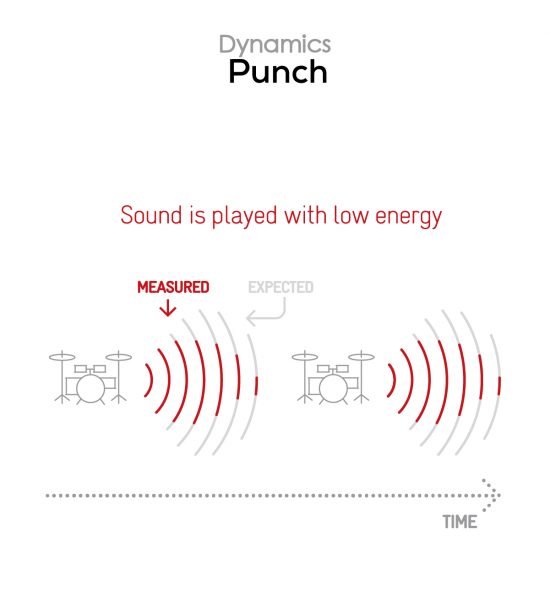
The sub-attributes for perceptual spatial tests include localizability, balance, distance, and wideness.

The Samsung Galaxy S21 Ultra 5G (Exynos) delivers fairly good spatial performance overall. The sound stage is a bit blurry, but localizability performance is fine — you can locate the placement of instruments accurately. Balance, however, is slightly inaccurate: elements that should be centered seem to be coming from different corners of the device. This shift would be difficult for an untrained ear to notice, so the performance was rated as acceptable. The device produces fairly good wideness, although it is affected by the lack of high-end extension. Distance performance was also affected by the lack of high-end extension.
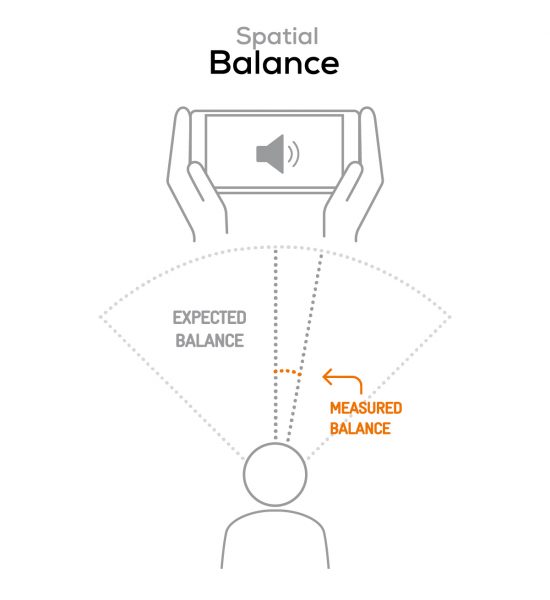


Volume
Samsung Galaxy S21 Ultra 5G (Exynos)
71
91
Volume tests measure both the overall loudness a device is able to reproduce and how smoothly volume increases and decreases based on user input.
In volume testing, Samsung’s Galaxy S21 Ultra 5G (Exynos) smoothly increases volume, as shown in the graph above. The maximum volume is quite good, but minimum volume was a bit too low — some highly dynamic elements in musical content (such as classical tracks) were not intelligible.
| Hip-Hop | Classical |
| 73.2 dBA | 71 dBA |

Artifacts
Samsung Galaxy S21 Ultra 5G (Exynos)
93
113
Artifacts tests measure how much source audio is distorted when played back through a device’s speakers. Distortion can occur both because of sound processing in the device and because of the quality of the speakers.
The Galaxy S21 Ultra 5G (Exynos) exhibited almost no artifacts, matching the top score of 93 in this attribute, a position also held by the Asus ROG Phone 5. One minor drawback is that distortions occur when playing games at maximum volume.

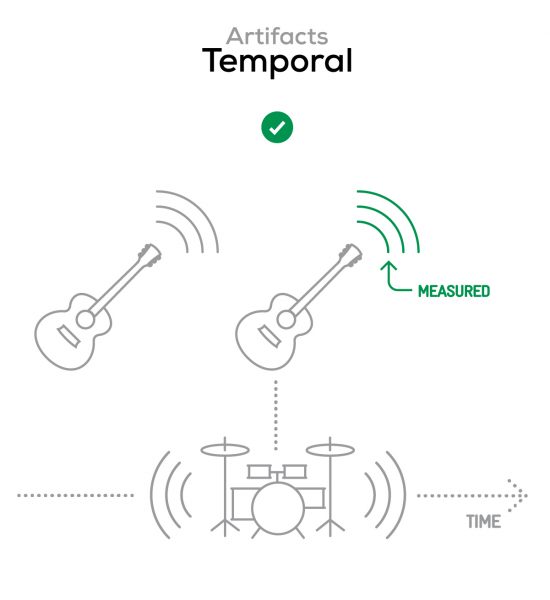
Recording

Timbre
Samsung Galaxy S21 Ultra 5G (Exynos)
80
91
The Galaxy S21 Ultra 5G (Exynos) fares better in our testing as a recording device, reaching an above-average score for its performance in recording timbre. When recording in a high sound-pressure-level (SPL) environment, tonal balance is very good overall, with precise treble, natural midrange, and a nice bass presence.
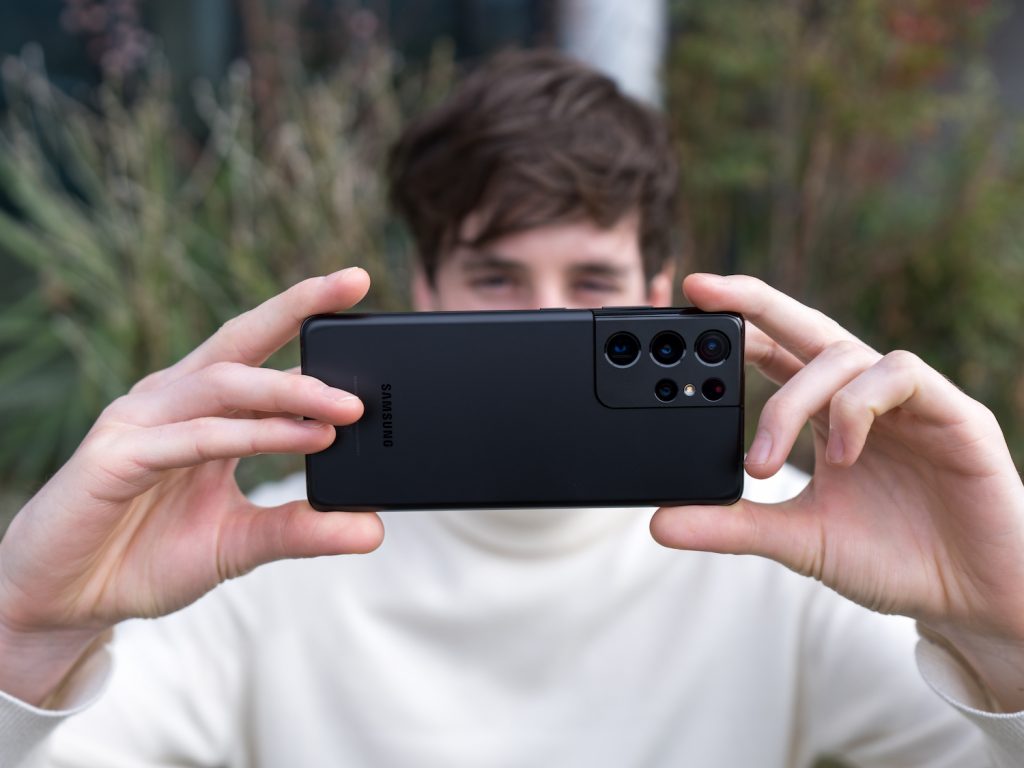
Our engineers perceived a slight lack of sub-bass, low-midrange, and high-end extension. When recording in regular environments, the performance remains solid in both the selfie video mode and with the memo app — tonal balance was good except for a lack of low mids, but overall midrange is natural and treble quite precise. In life video mode, on the other hand, tonal balance is hindered by a lack of treble and bass. Overall, sound is very midrange-focused and canny.

Dynamics
Samsung Galaxy S21 Ultra 5G (Exynos)
67
81
The Galaxy S21 Ultra 5G (Exynos) turned in a good dynamics performance as a recording device. The signal-to-noise (SNR) ratio was very good in all the use cases tested — background is well attenuated.
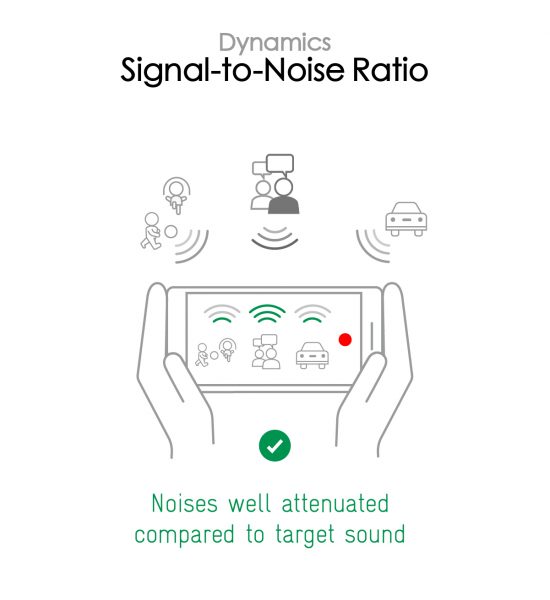

In selfie video mode and with the memo app, the envelope is accurate with precise plosives. In life video mode, however, the envelope is not realistic: the attack seems rounded, and plosives are not sharp. At high SPL, dynamics performance is accurate and the voice envelope is precise.

Spatial
Samsung Galaxy S21 Ultra 5G (Exynos)
56
78
The spatial performance of the S21 Ultra 5G (Exynos) was a mixed bag, leading to a below-average score. In life video mode, localizability is good: sources are precisely reproduced in the audio scene, even if their timbre is not very accurate. Wideness is great, and allows for a very realistic stereo rendering. Distance performance is impaired by an unnatural midrange that tends to move voices further away.
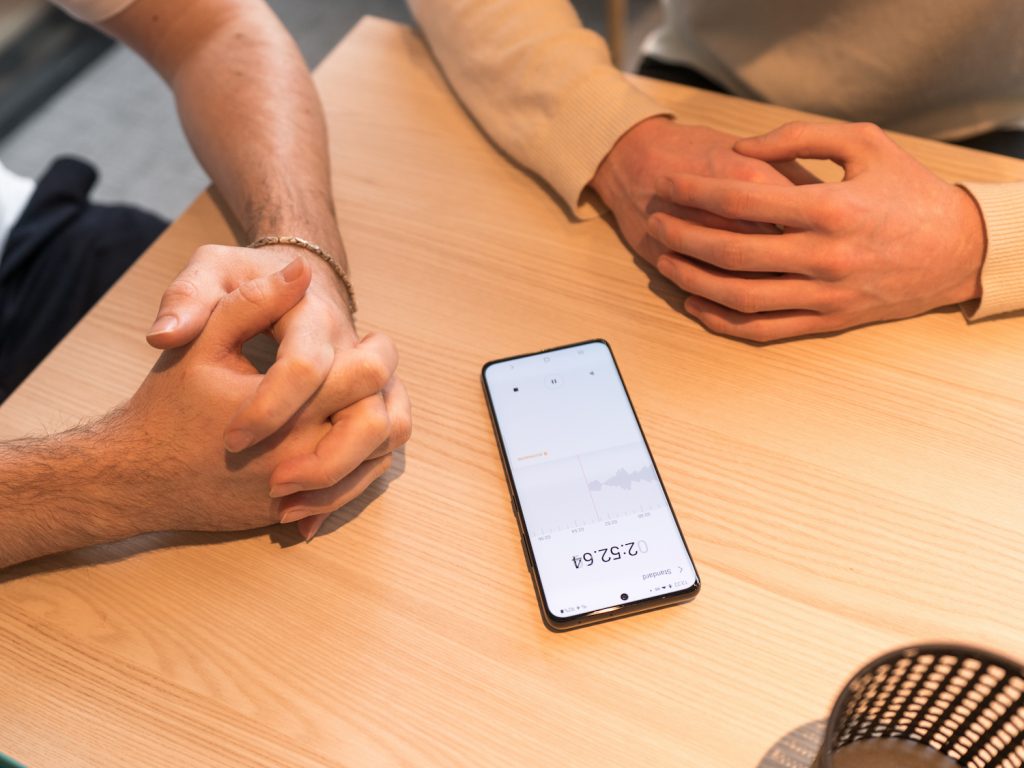
In selfie video, the localizability is decent, but wideness is poor. Distance is hindered by a lack of low midrange, but the perception created is much more realistic than in life video. The selfie video mode produces good directivity; audio sources coming from the sides and back of the device are properly attenuated.
In the meeting use case, directivity is impaired because the sound is attenuated depending on the position of the people around the device. The goal in this use case should be to have all the signals recorded at the same level all around the phone. Moreover, the memo app records in mono, producing a zero for wideness.

Volume
Samsung Galaxy S21 Ultra 5G (Exynos)
71
99
The volume performance of the device is average. Recordings are satisfactorily loud, but not as loud as many other devices we’ve tested. In the high-SPL scenario, however, the Galaxy S21 Ultra 5G (Exynos) produced excellent results, recording at the maximum volume level without distortion.
Here are our test results, measured in LUFS (Loudness Unit Full Scale). As a reference, we expect loudness levels to be above -24 LUFS for recorded content:
| Meeting | Life Video | Selfie Video | Memo |
| -26.8 LUFS | -20.1 LUFS | -22.5 LUFS | -22.3 LUFS |

Artifacts
Samsung Galaxy S21 Ultra 5G (Exynos)
84
97
The Galaxy S21 Ultra 5G (Exynos) produced very few artifacts overall. There was some slight distortion on shouting voices, and at high SPL, some slight bass distortion was perceived, but it wasn’t to the point of being disturbing.
You can hear some of those artifacts for yourself in this sample recording:

Background
Samsung Galaxy S21 Ultra 5G (Exynos)
39
60
The background performance of the Galaxy S21 Ultra 5G (Exynos) was not great. The background was not realistic because of an unnatural tonal balance. The sound is midrange-focused and canny.
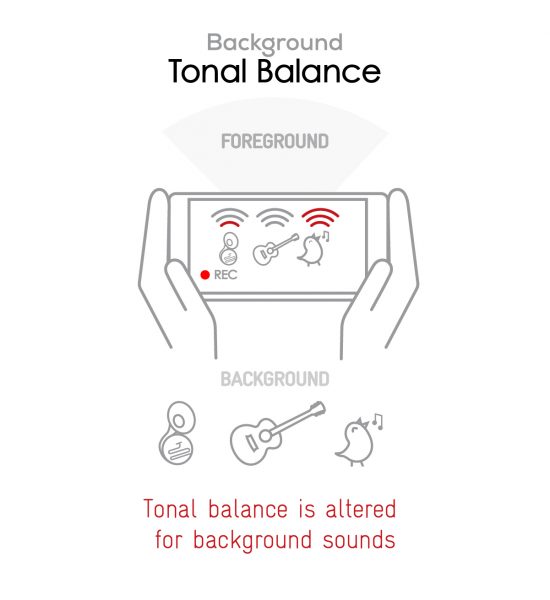
Conclusion
The Samsung Galaxy S21 Ultra 5G (Exynos) is adequate but not exceptional when it comes to its performance in audio. The one place where it topped the field was in the attribute of artifacts in playback — it produces clean sound. Otherwise it was functional in every sense; balance and localizability were decent, dynamics were good at low volume and the maximum volume is loud enough. Timbre was held back by a lack of low- and high-end extensions, and a tonal balance over-focused on the midrange.
As a recording device, the S21 Ultra 5G (Exynos) works well — especially in loud environments, and the SNR was very good in all the use cases we tested. In life video, wideness and localizability were good, and in selfie video mode, directivity was good. The level of loudness in recording was very good, and as with playback, the device earned a high score for not having many artifacts. When recording in more normal sound-level environments, the device is more uneven. Tonal balance is impaired by a lack of treble and bass, The sound is too midrange-focused and sounds canny; the sound envelope in life video is not realistic.
Playback
Pros
- Overall performance is good
- Almost no discernible artifacts
- Dynamics are good at low volumes
Cons
- Timbre lacks low- and high-end extensions.
- The lack of high-end inhibits wideness and distance performances
- Minimum volume step is too low.
Recording
Pros
- Good timbre performance at high SPL
- Few artifacts
- Good SNR across tested use cases
Cons
- Mono recording of the memo app impairs wideness and localizability.
- A lack of treble and bass in life video recording hinders tonal balance.
- Background noise is not realistic.


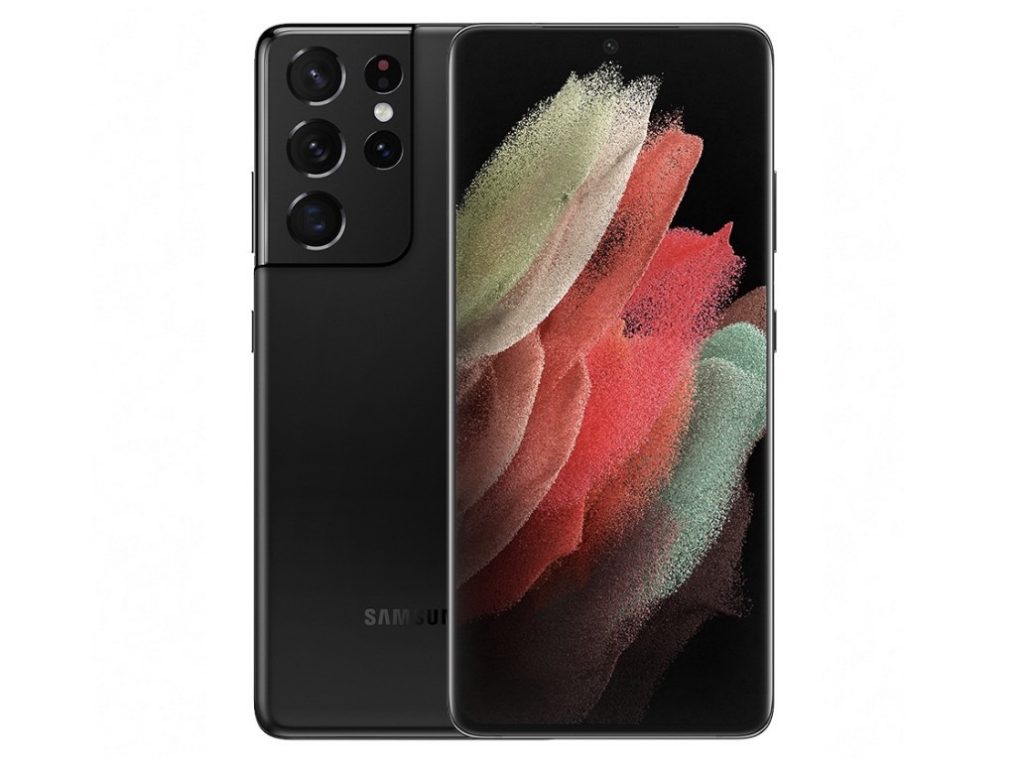
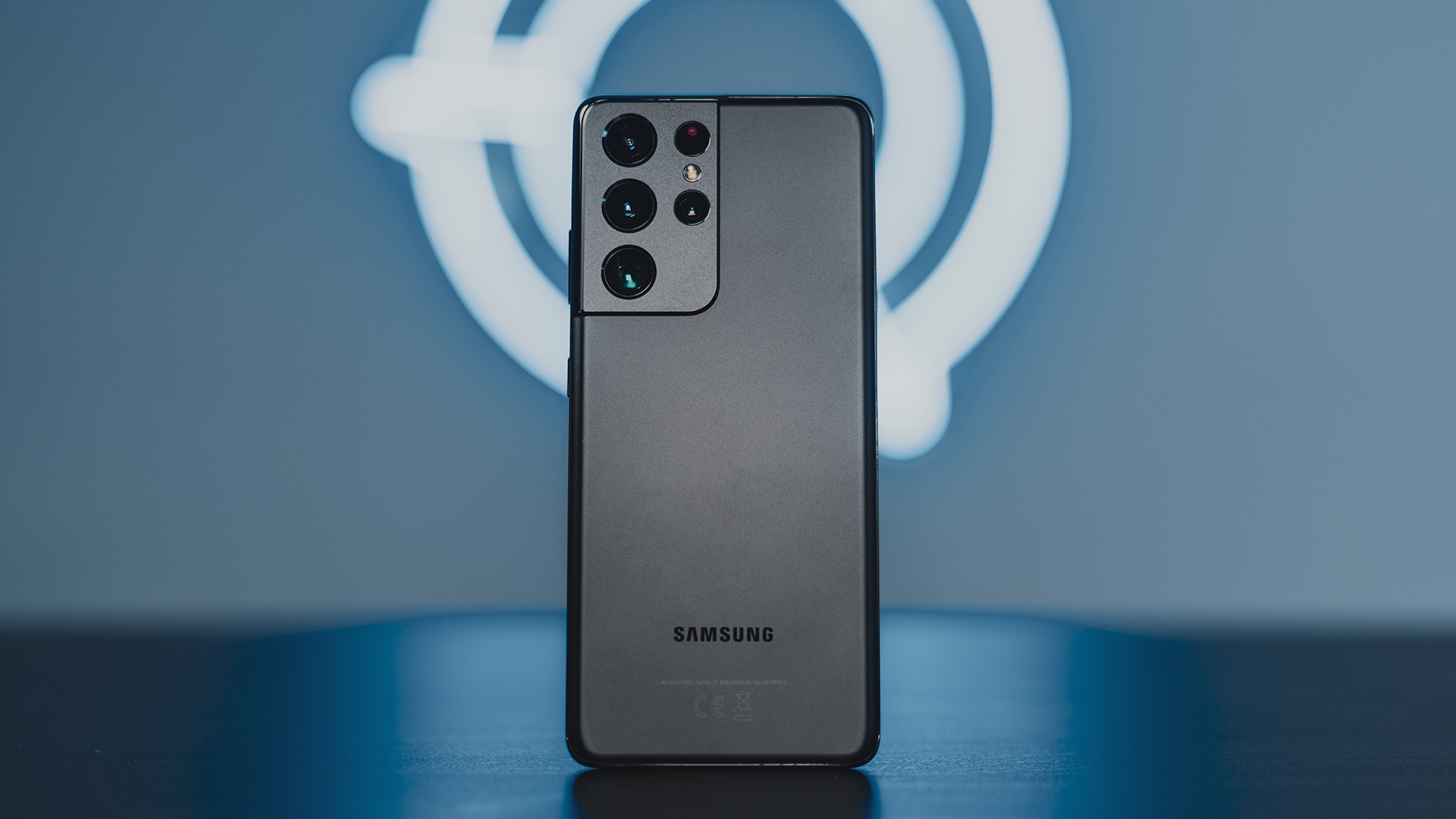
DXOMARK encourages its readers to share comments on the articles. To read or post comments, Disqus cookies are required. Change your Cookies Preferences and read more about our Comment Policy.